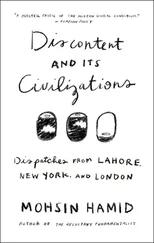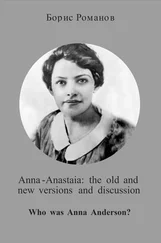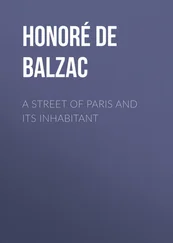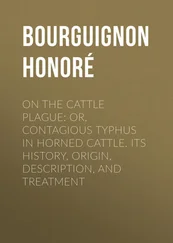Henry Edwards - Old and New Paris - Its History, Its People, and Its Places, v. 1
Здесь есть возможность читать онлайн «Henry Edwards - Old and New Paris - Its History, Its People, and Its Places, v. 1» — ознакомительный отрывок электронной книги совершенно бесплатно, а после прочтения отрывка купить полную версию. В некоторых случаях можно слушать аудио, скачать через торрент в формате fb2 и присутствует краткое содержание. Жанр: foreign_antique, foreign_prose, Путешествия и география, на английском языке. Описание произведения, (предисловие) а так же отзывы посетителей доступны на портале библиотеки ЛибКат.
- Название:Old and New Paris: Its History, Its People, and Its Places, v. 1
- Автор:
- Жанр:
- Год:неизвестен
- ISBN:нет данных
- Рейтинг книги:4 / 5. Голосов: 1
-
Избранное:Добавить в избранное
- Отзывы:
-
Ваша оценка:
- 80
- 1
- 2
- 3
- 4
- 5
Old and New Paris: Its History, Its People, and Its Places, v. 1: краткое содержание, описание и аннотация
Предлагаем к чтению аннотацию, описание, краткое содержание или предисловие (зависит от того, что написал сам автор книги «Old and New Paris: Its History, Its People, and Its Places, v. 1»). Если вы не нашли необходимую информацию о книге — напишите в комментариях, мы постараемся отыскать её.
Old and New Paris: Its History, Its People, and Its Places, v. 1 — читать онлайн ознакомительный отрывок
Ниже представлен текст книги, разбитый по страницам. Система сохранения места последней прочитанной страницы, позволяет с удобством читать онлайн бесплатно книгу «Old and New Paris: Its History, Its People, and Its Places, v. 1», без необходимости каждый раз заново искать на чём Вы остановились. Поставьте закладку, и сможете в любой момент перейти на страницу, на которой закончили чтение.
Интервал:
Закладка:
A few days before the massacre Caumont de la Force had bought some horses of a dealer, who, chancing to be in the immediate neighbourhood when Admiral de Coligny was assassinated, hastened to inform his customer, well known as one of the Protestant leaders, of what had taken place. This nobleman and his two sons lived in the Faubourg St. – Germain, which was not yet connected with the right bank by any bridge. The horse-dealer, therefore, swam across the Seine to warn La Force, who, however, had already effected his escape. But as his children were not following him, he returned to save them, and had scarcely set foot in his house when the assassins were upon him. Their leader, a man named Martin, entered his room, disarmed both father and sons, and told them they must die. La Force offered the would-be murderers a ransom of 2,000 crowns, payable in two days. The chief accepted, and told La Force and his children to place in their hats paper crosses, and to turn back their right sleeves to the shoulder: such being the signs of immunity among the slaughterers. Thus prepared, Martin conveyed them to his house in the Rue des Petits Champs, and made La Force swear that neither he nor his children would leave the place until the 2,000 crowns were paid. For additional security, he placed some Swiss soldiers on guard, when one of them, touched with compassion, offered to let the prisoners escape. La Force, however, refused, preferring, he said, to die rather than fail in his word. An aunt of La Force’s furnished him with the 2,000 crowns, and he was about to count them out to Martin, when a French nobleman came to inform La Force that the Duke of Anjou wished to speak to him. On this pretext the emissary conducted both father and sons from the house without their caps: with nothing, that is to say, to distinguish them from the victims of assassination. They were at once set upon. La Force’s eldest son fell, crying out “ Je suis mort. ” The father, pierced to the heart, uttered a similar exclamation; on which the youngest La Force had the presence of mind to throw himself to the ground as if dead. Supposed to be a corpse, he was gradually stripped of his clothes, until a man who intended to steal from him a pair of woollen stockings, of which he had not yet been divested, could not restrain, as he looked upon the boy’s pallid face, some expression of sympathy. Seeing that the stranger had taken pity on him, young La Force whispered that he was not dead. He was told to keep quiet; and the man with a taste for woollen stockings wrapped him up in his cloak and carried him away. “What have you there?” asked an assassin. “My nephew,” replied the man. “He went out last night and got dead drunk, and I mean, as soon as I get him home, to give him a good thrashing.” Young La Force made his preserver a present of thirty crowns, and had himself conveyed in safety to the Arsenal, of which his uncle, Marshal de Biron, was governor.
The most famous, or rather infamous, of those who took part in the massacre as leaders or principal agents were Jean Férier, an advocate, and at that time captain of his quarter, Peyou, a butcher, and Curcé, a goldsmith, who, with upturned sleeves and bloody arms, boasted that 400 Huguenots had died beneath his blade. The massacre lasted in Paris with diminishing fury for a whole month. It was enacted, moreover, in nearly all the large towns; though in some few the governors refused to execute the orders transmitted to them. At Lyons 4,000 were killed. Here the governor, Mandelot by name, finding after several days’ massacre that there were still a number of Huguenots to slay, ordered the executioner to despatch them; on which that functionary replied that it was his duty to execute criminals convicted of violating the laws of State, but that he was not an assassin, and would not do assassins’ work. This spirited reply recalls Joseph de Maistre’s celebrated paradox about the executioner and the soldier: the former putting to death only the worst offenders in virtue of a legal mandate, yet universally loathed; the latter plunging his sword into the body of anyone he is told to slay, yet universally honoured. The explanation of the ingenious paradox is, after all, simple enough. The executioner kills in cold blood, without danger to himself; the soldier risks his life in the performance of his duty.
A Lyons butcher, less scrupulous than the executioner, killed so many Huguenots that, according to Dulaure, in his Singularités Historiques , he was invited to dinner by the Pope’s Legate, passing through Lyons on his way to Paris. The number of Huguenots massacred throughout France was estimated at 60,000. Though the murders were generally due to fanaticism, many persons were put to death for purely private reasons. Heirs killed those from whom they expected to inherit, lovers their rivals, candidates for public offices those whom they wished to replace. On the third day of the massacre Charles IX. went to Parliament, and avowed that the slaughter of the Huguenots had taken place by his command, and in order to anticipate an intended Huguenot rising organised by Coligny. The Parliament accepted this announcement with approval; and despite the absence of all evidence against the admiral, it was decreed that his body should be dragged through the streets on a hurdle, then exhibited in the Place de Grève, and ultimately hung by the heels on a gibbet at Montfaucon. His house was at the same time to be destroyed, the trees in his garden cut down, and the members of his family reduced to the condition of plebeians, or roturiers , and declared unable to hold any public office; which, however, did not prevent Coligny’s daughter from becoming soon afterwards the wife of the Prince of Orange.
Not many years after the massacre of St. Bartholomew, the Church of St. – Germain-l’Auxerrois, in September, 1581, was the starting-point of a very different series of performances. “On Monday, September 18th,” says the writer of a contemporary account, “the Duc de Joyeuse (Henry III.’s favourite ‘minion’) and Marguerite of Lorraine, daughter of Nicholas de Vaudemont, and sister of the queen, were betrothed in the Queen’s Chamber, and the following Sunday were married at three o’clock in the afternoon at the parish church of Saint-Germain-l’Auxerrois. The king led the bride, followed by the queen, the princesses, and other ladies in such superb attire that no one recollects to have seen anything like it in France so rich and so sumptuous. The dresses of the king and of the bridegroom were the same, and were so covered with embroidery, pearls, and precious stones, that it was impossible to estimate their value. Such an accoutrement had, for instance, cost ten thousand crowns in the making; and at the seventeen feasts which were now from day to day given by the king to the princes and lords related to the bride, and by other great persons of the Court, the guests appeared each time in some new costume, gorgeous with embroidery, gold, silver, and diamonds. The expense was so great, what with tournaments, masquerades, presents, devices, music, and liveries, that it was said the king would not be quit for twelve hundred thousand crowns. On Tuesday, October 16th, the Cardinal de Bourbon gave his feast in the palace attached to his abbey, St. – Germain-des-Prés, and caused to be constructed on the Seine a superb barque in the form of a triumphal car, which was to convey the king, princes, princesses, and the newly married pair from the Louvre to the Pré-aux-Clercs in solemn pomp. This stately vehicle was to be drawn on the water by smaller boats disguised as sea-horses, Tritons, dolphins, whales, and other marine monsters, to the number of twenty-four. In front, concealed in the belly of the said monsters, were a number of skilled musicians, with trumpets, clarions, cornets, violins, and hautboys, besides even some firework-makers, who, at dusk, were to afford pastime not only to the king, but to fifty thousand persons on the banks.” The piece, however, was not well played, and it was impossible to make the animals advance as was intended, so that the king, after having from four o’clock in the afternoon till seven watched at the Tuileries the movements and workings of these animals without perceiving any effect, said sarcastically, “Ce sont des bêtes qui commandent a d’autres bêtes,” and drove away with the queen in his coach, to be present at the cardinal’s feast, which was the most magnificent of all. Among other entertainments, his Eminence gave that of an artificial garden, luxuriant with growing flowers and fruits, as if it had been May or August.
Читать дальшеИнтервал:
Закладка:
Похожие книги на «Old and New Paris: Its History, Its People, and Its Places, v. 1»
Представляем Вашему вниманию похожие книги на «Old and New Paris: Its History, Its People, and Its Places, v. 1» списком для выбора. Мы отобрали схожую по названию и смыслу литературу в надежде предоставить читателям больше вариантов отыскать новые, интересные, ещё непрочитанные произведения.
Обсуждение, отзывы о книге «Old and New Paris: Its History, Its People, and Its Places, v. 1» и просто собственные мнения читателей. Оставьте ваши комментарии, напишите, что Вы думаете о произведении, его смысле или главных героях. Укажите что конкретно понравилось, а что нет, и почему Вы так считаете.












